Don't wanna be here? Send us removal request.
Text
Frank Stella

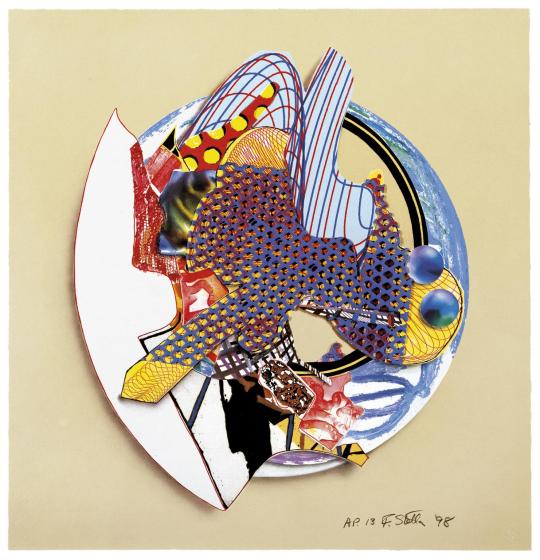
1) Salta nel mio Sacco, 1984
2) Iffish, 1998
Frank Stella is an American artist best known for his use of geometric patterns and shapes in creating both paintings and sculptures. He uses the shapes and compositions to tell a story. His work stood out to me due to the use of colour. The contrast of bold and dull hues work really well in a non traditional sense. I feel that you wouldn't normally put these colours together but because of the way he composes the shapes, they work well against one another. Both images above have many layers which give a sense of dimension. I’m inspired by his use of shapes and patterns within the shapes. The top image almost looks as though the shapes are floating because of the lines within the shapes.
0 notes
Text
Kurt Schwitters



1) En Morn, 1947. No material was considered unsuitable for art by Schwitters. His collages using magazine cuttings, found objects, sweet wrappers etc paved the way for pop art and arte povera
2) Untitled (Quality Street), 1943, made of collaged sweet wrappers
3) Photograph: Herling/Gwose/Kurt and Ernst Schwitters Stiftung, Sprengel Museum, Hannover
I chose to research Schwitters because of his use of material within his collages. He incorporates found objects, typography and sound poetry to construct compositions. He uses magazine clippings, waste material and other recycled materials to express a rapidly changing world.
You can see that within his collages part of the materials used are waste or scraps of paper. He layers them up and builds an in treating composition which looks as though it has been done unexpectedly. The contrast between the colours and the text works well and the text and images draws you in. I find his work really interesting to look at.
You can see in certain collages he is telling a story through his use of words and images. His work was influenced by dadaist while exploring abstract collage by incorporating different materials in to his work.
0 notes
Text
Sir Eduardo Paolozzi

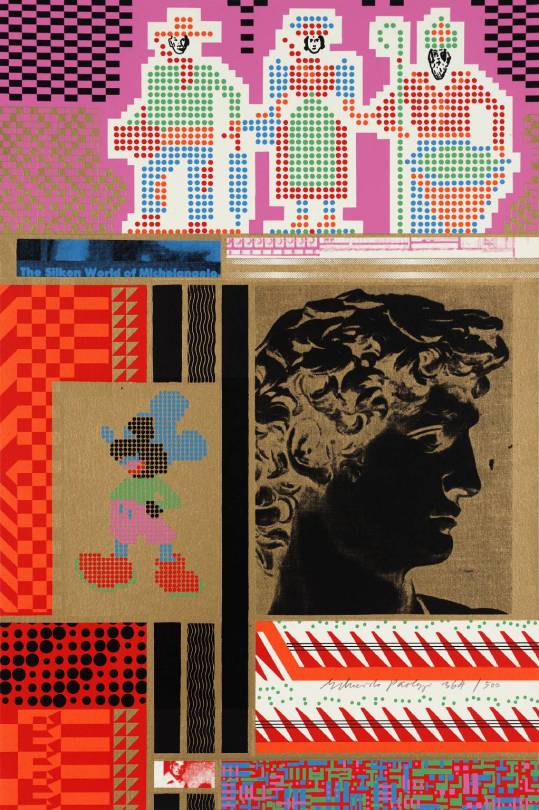
Eduardo Paolozzi was a Scottish artist and prominent influence on what became the Pop Art movement. He produced large-scale figurative sculptures, prints, and collages made from magazines and other found objects. His work stood out to me from his use of colour and images within the work. He uses fragments of screen prints, tickets and snaps of magazines to compose a carefully thought out collage.
He uses a contrast of pop art and traditional images. The second image incorporates a Mickey Mouse figure along with Michelangelo and It is clear that a lot of his imagery comes from magazines. His collages look as though he has purposely thought out the composition with the neat placement of each cut out.
His work almost looks like it explores the relationship between icons and machinery with his use of retro patterns which could be perceived as a game from an old arcade machine. He looks at the contrast between pop art and history along with human beings and mass production.
0 notes
Text
Victoria Villasana


Victoria Villasana (born in Guadalajara, Mexico) is a textile artist, interested in history, culture and how people relate to each other in a fragmented post-digital world. Through pattern geometry and colour she weaves stories to express the resiliency and creativity of the human spirit.
She transforms black and white images of icons and figures and incorporates bold and vivid textiles. The embroidery instantly brightens the image and gives it a sense of emotion. She uses repetition and shapes within the clothes and sometimes adds to the background creating a story. In the image of Yayoi Kusama, she incorporates embroidery to her eyes as if it looks like she could be wearing glasses or even wearing makeup.
Her work transforms from a flat image to a piece of art that shows emotion and vibrancy.
0 notes
Text
Kehinde Wiley

Left - Kehinde Wiley: Le Roi a la Chasse, 2006
Right - Sir Anthony van Dyck, King Charles I at the Hunt, c. 1635
Kehinde Wiley is an American portrait painter based in New York City, who is known for his highly naturalistic paintings of African Americans, frequently referencing the work of Old Master paintings.
His work often appropriates old paintings and changes the context to focus on race, todays society and political issues. He introduces a new meaning by adding his own style to each painting.
In the painting above he changes the stylistic language but keeps the body language the same. The background changes and the painting turns from traditional to contemporary. I’m inspired by the way he appropriates the image to change the visual vocabulary and glorifies the new subject matter. He makes you think about the new context of the work and how time has changed from the original piece of art.
0 notes
Text
David Wightman

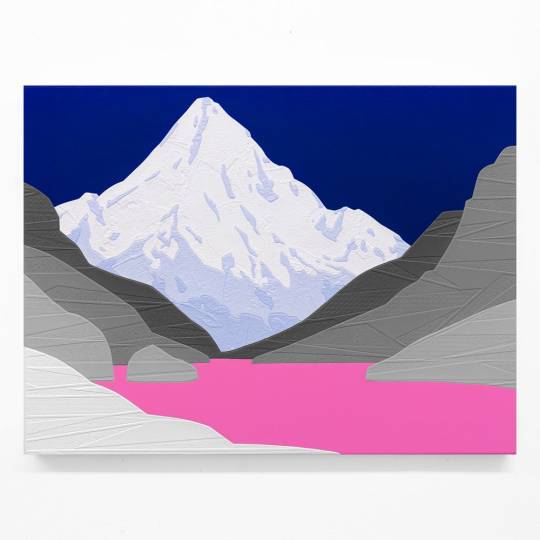
1) acrylic and collaged wallpaper on canvas - 75 x 75 cm
2) acrylic and collaged wallpaper on canvas - 45 x 60 cm
British painter and printmaker from Stockport, Manchester now based in London, UK. He creates beautiful paintings and prints of fictional landscapes. The surfaces of his paintings are made from textured wallpaper collaged with a technique similar to marquetry. Colour and composition are the key aspects of his work.
His style is characterised by rich colours, sharp shapes and a geometric abstract aesthetic. The texture of each piece is achieved by the overlapping of collaged wallpaper alongside the gradual shifts in colour.
Having a passion for texture and creating dimension in my work, I came across David’s paintings. Wallpaper is something I haven't used before to create texture but I would like to experiment with it. I will collect some free samples and use them as a base layer and see what kind of texture I can create.
0 notes
Text
Njideka Akunyili Crosby
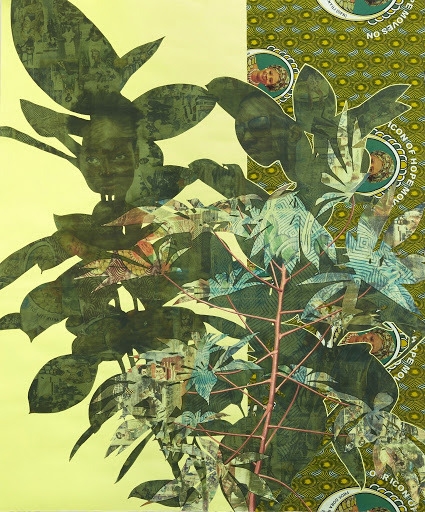

1) Cassava Garden 2015 - Acrylic, transfers, coloured pencil, charcoal and commemorative fabric on paper - 6 ft.× 5 ft.
2) I Still Face You 2015 Acrylic, oil, transfers, coloured pencil, charcoal and collage on paper - 7 ft.× 8.75 ft.
Akunyili Crosby's art "negotiates the cultural terrain between her adopted home in America and her native Nigeria, creating collage and photo transfer-based paintings that expose the challenges of occupying these two worlds".
The main subject of her work seems to be the figure in which is placed within a home environment. The patterns and colours used explore Nigerian culture and identity. Most of her images include moments of her and her husband.
I like the contrast between the patterned fabric and the acrylic paint. The block colours stand out against the fabric yet you are still drawn to the pattern.
0 notes
Text
Meredith Woolnough


1st photo - Mushroom Coral Mandela, 93cm x 93cm (Embroided thread and pins on paper)
2nd photo - Coral Grid, 23cm in diameter
Meredith Woolnough's elegant embroidered drawings capture the beauty and fragility of nature in knotted threads. Vibrant coloured structures of organic shapes hover effortlessly above the surface, elegant and enchanting.
I researched Meredith after Sue had spoke about her work. Her work is very intricate and looks extremely delicate. I love her use of colours and some of her pieces look like they represent cells or sea creatures.
0 notes
Text
Erik Speer


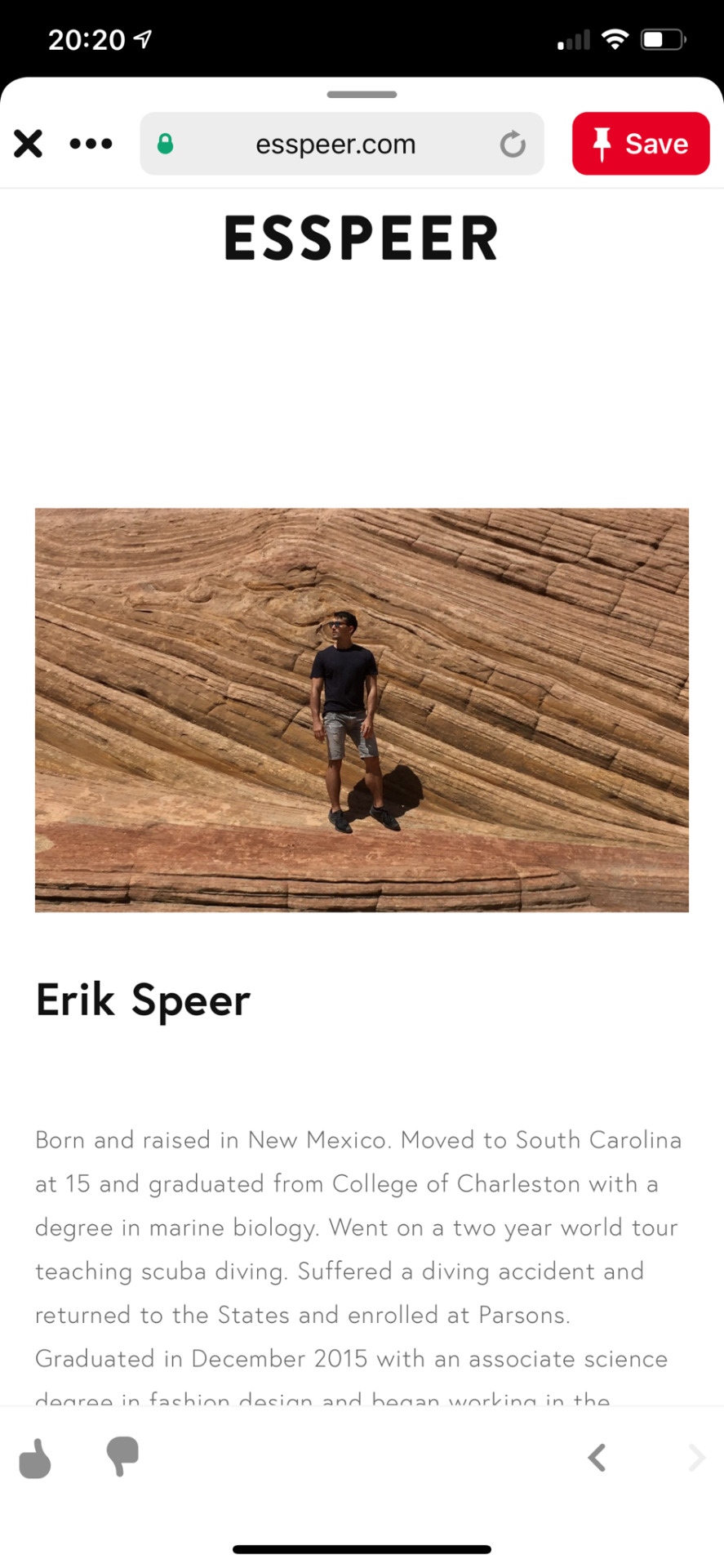
I was browsing on Pinterest and the the image above popped up on my feed. It caught my eye straight away. Trying to find ways to incorporate textiles into my work, I feel as thought this has inspired me to add fabric and material in to my paintings. I love texture and mixed media, and I think I could create quite an interesting piece on canvas but using fabric/yarn/wool ect instead.
I had a look at the artists website and his work is really interesting. He doesn’t just hang his work on the wall, he has also attached his designs to furniture. I really like the chair and the use of nude colour palette. I love the dimension in the chair, It’s as though I can almost feel the fabrics without sitting or touching it.
He mainly uses materials such as wool, silk and linen and includes methods like knitting, knitting, crocheting, braiding and weaving.
0 notes